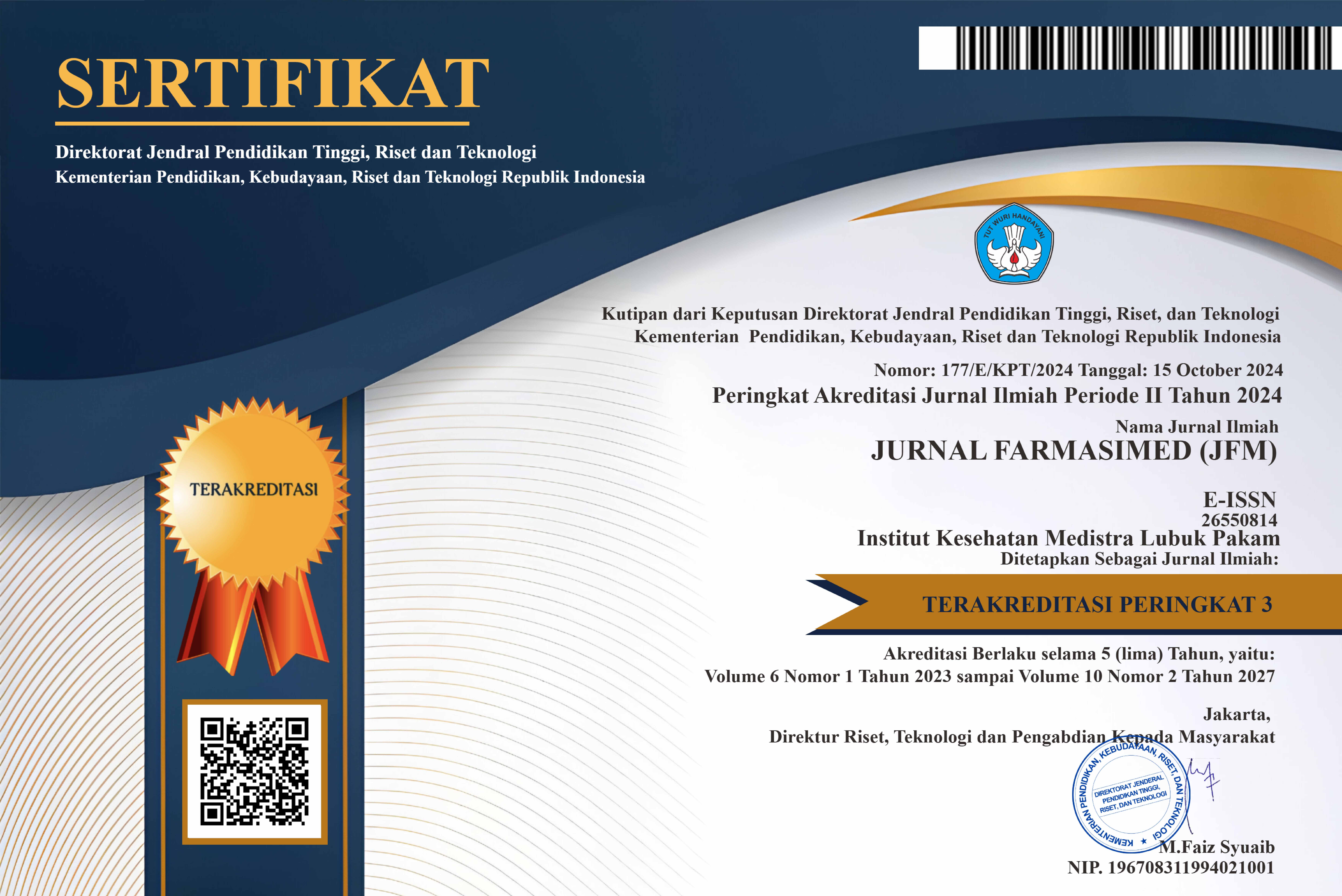Pengaruh Kecepatan Pembentukan Tukak Lambung Terhadap Pemberian Berbagai Golongan NSAID Pada Tikus Jantan
DOI:
https://doi.org/10.35451/jfm.v1i2.147Keywords:
Gastric Stomach, NSAID, Aspirin, Mefenamat Acid, Diclofenac Sodium, Ibuprofen.Abstract
Background : Gastric ulcer is wound to the mucosal layer (epithelial layer) of the stomach and mucosal irritation of 5 mm or more in diameter with depth down to submucosa. The basic pathogenesis of gastric ulcers in when there is an imbalance of aggressive factor enhancement. Non-steroidal antiinflammantory drug can cause stomach ulcers in two ways, either directly or topical irritation of the epithelial tissue and inhibit the endogeneous system of gastrointestinal mucosa of prostaglandins. In this case inhibition of prostaglandin systhesis is the dominant factor of peptic ulcers by NSAIDs.
Objectives : The purpose of this study was to determine the effct of NSAID drug administration on the formation of peptic ulcers and to know the difference in the rate of formation of peptic ulcers from each class.
Method : Sampel method mice performed surgery on the stomach is done in Pharmacology Laboratory of Pharmacy Institute Deli Husada Deli Tua.
Results : The results of this study indicate that faster drugs cause gastric ulcers with a degree of redness are Aspirin 4.03 mm, 2.01 mm mefenamat and 1.02 mm Diclofenac Sodium while Ibuprofen mwdication does not cause peptic ulcers.
Conclusion : The results of this study it can be concluded that Aspirin administration with doses of 21 mg/kg faster causes gastric ulcers from other NSAID groups such as Mefenamat with a dose of 21 mg/kg BW, Diclofenac sodium at a dose of 2 mg/kg while administration, Ibuprofen for ten days does not couse ulcers in the stomach of experimetal animals.
Downloads
References
Enaganti, S. 2006, Peptic ulcer disease,The disease and non-drug treatment, Hospital Pharmacist, 3: 239-42.
Fajriani. (2008). Pemberian Obat-obatan Anti Inflamasi Non Steroid (AINS) pada Anak, Indonesian Journal of Dentistry, 15(3): 200-204.
Johnson RJ, Kang DH, Feig D, Kivlighn S, Kannelis J, Watanabe S, Tuttle KR (2007). Is there a pathogenetic rolefor uric acid in hypertension and
cardiovascular and renal disease? Hypertension, 41:1183-1190.
Tarigan, P., (2009). Tukak Gaster. Dalam: Sudoyo, A. W., Setiyohadi, B. , Alwi, I., Simadibrata, M., Setiati, S., (eds). Buku Ajar Ilmu Penyakit
Ilmu Dalam Edisi V Jilid I. Jakarta: Pusat Penerbitan Ilmu Penyakit Dalam.
Tjay dan Rahardja, (2002), Obat-obat Penting, Khasiat, Pengunaaan dan Efek Sampingnya, Edisi V, PTElex Media Komputindo
Kelompok Gramedia, Jakarta.
Wilmana, P.F., dan Gan, S., (2007). Analgesik-Antipiretik Analgesik AntiInflamasi Nonsteroid dan Obat Gangguan Sendi Lainnya. Dalam: Gan, S., Setiabudy, R., dan Elysabeth, eds. Farmakologi dan Terapi. Edisi 5. Jakarta: Departemen Farmakologi dan Terapeutik FK UI, 237.
Downloads
Published
Issue
Section
License
Copyright in each article is the property of the Author.

























